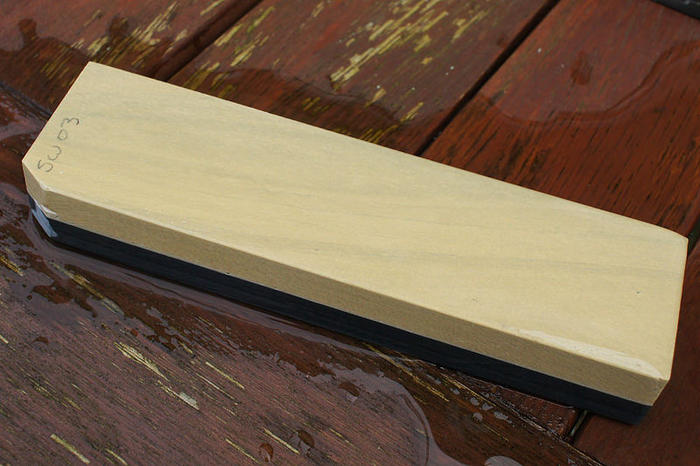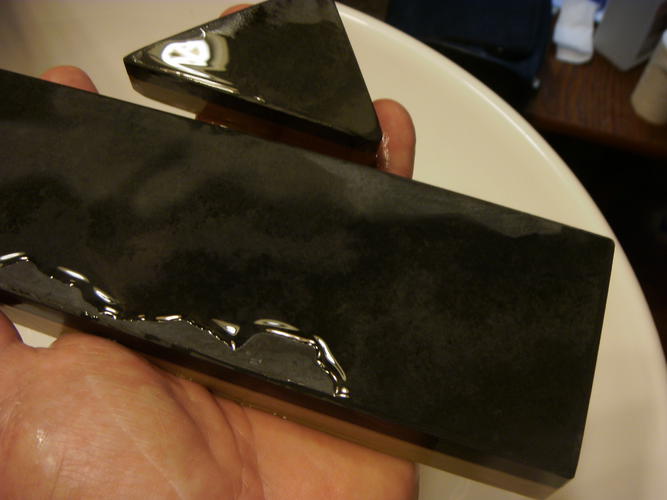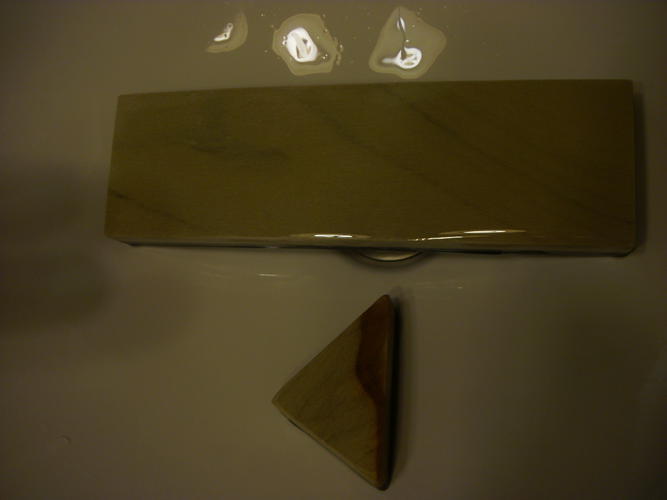Results 11 to 20 of 26
Thread: Burnishing a coticule stone
-
04-05-2016, 03:16 PM #11

Most new production stones are la griese. It looks very much like a la griese but it does not matter. Try more lapping with 400 to 600 sand paper. I have the same issue with a similar stone. I lapped with 400 then went to 1200 grit and it felt better with the 400 grit. It does work well, no ill effect to the edge. I just don't like the feel of the stone. It seems to be getting better with use.

-
04-05-2016, 07:22 PM #12Junior Member

- Join Date
- Mar 2016
- Posts
- 5
Thanked: 0
I do have one coticule that gets burnished with use. So it is possible. I have tried burnishing other cotis too, but they just turned matte really quickly. I guess the stone need to have the right properties. If it doesn't happen naturally, it is not meant to be. That's my experience.
-
04-07-2016, 04:24 AM #13Senior Member

- Join Date
- Nov 2014
- Posts
- 143
Thanked: 7
Lap, then rub a slurry stone over the entire surface several times, then take a kitchen knife or an old razor and hone on it till it feels smoother. That is all that is needed, for most cotis atleast.
-
04-07-2016, 01:11 PM #14

I've just got my stone today, And I've been playing with it all morning.
It looks similar to KenG's. Probably the same vein.
Out of the box it was very rough to hone on. Felt like marbles or grit with slurry, So I lapped it out with a 400 diamond plate and tested again. It still had the rough feel. So I lapped it again to 1K.
It's an odd rock. I've put 3 razors over it. The original 1K razor came off the rock sharp cutting arm hair and after stropping a reasonable HHT3-4, The second one took a lot longer to get it to feel right on the rock, and came away with an edge that refused to cut arm hair, After stropping this went into a really solid HHT4.
The last razor well I didn't use slurry on the second razor, And by the time I got to this 3rd razor the rock is so slow I can't see any material been removed in the water. I did about an hours worth of honing. Off the rock the razor refused to cut arm hair again. After stropping the edge is like lighting. HHT5 for most of the blade (the toe is at a 4). The stone has taken a glass like polish and feels like my arky when honing. No idea what the shave will be like but I'll get to test it later.
The burnish after that 3rd razor is mirror like. It's even reflecting colour. I need to do full shave tests to see what the rock puts on the edge but so far the burnished finish looks slow but very promising. My worry is that edge doesn't feel like a coticule edge.

Last edited by Iceni; 04-07-2016 at 01:16 PM.
Real name, Blake
-
04-07-2016, 04:29 PM #15Senior Member

- Join Date
- Jan 2015
- Location
- mountainside North Alabama
- Posts
- 129
Thanked: 14
Nice, yes it has the wood grain look like mine. Also, I keep looking at the slate on the back- it has beveled edges and an 'ink blot' pattern. I've read its not recommended for razors, but, dang it I have to try just to satisfy my curiosity. I'm going to the beach for a week in May and this stone is coming with. I mean, need something fun to do before the Lady gets up...
-
04-08-2016, 09:32 AM #16Senior Member

- Join Date
- Jan 2015
- Location
- mountainside North Alabama
- Posts
- 129
Thanked: 14 the slate side
the slate side


the slate side is exceedingly smooth to the touch and makes a white slurry. Haven't tried it on razor yet but I will. The mottled pattern on the slate matches the slate on the slurry stone that came with it, and the coti side has red streak.
-
04-08-2016, 10:09 AM #17illegitimum non carborundum



- Join Date
- Jan 2008
- Location
- Rochester, MN
- Posts
- 11,552
- Blog Entries
- 1
Thanked: 3795
None of my coticules have a slate backing, but it is my impression that it is not of much use for honing. Please let us know how it works for you.
-
04-08-2016, 02:11 PM #18

What's on the back of"My Coti,s" ? Tc
“ I,m getting the impression that everyone thinks I have TIME to fix their bikes”
-
04-08-2016, 04:13 PM #19illegitimum non carborundum



- Join Date
- Jan 2008
- Location
- Rochester, MN
- Posts
- 11,552
- Blog Entries
- 1
Thanked: 3795
Older coticules, and some of the new ones, are backed with BBW (Big Beautiful ...just kidding! It's Belgian Blue Whetstone). That BBW can be naturally adjacent to the yellow coticule layer and is cut to leave those layers together. These are considered to be natural combination coticules. The majority of mine are of that type. I believe that both of "your" coticules are of that type. Certainly the thicker one is but I don't recall the other one.
Alternatively the BBW can be glued to the yellow coticule layer. The reason that the BBW is glued to, or left attached to, the coticule layer is that it provides strength or support to the relatively fragile coticule.
Many modern (recently mined) coticules are backed by slate. It is there for support only and is not considered to be of use for honing, but your results may vary.
-
04-08-2016, 09:52 PM #20

Very good summary on bbw and coticule backing. I will add a lot of people would want a coticule backed with a bbw. Its nice to have a combination stone. This is why most combination coticules you buy directly from the mine or a place that does resales cost a lot more then the portugese slate backed coticules. A coticule found in the wild will most likely be backed with bbw. People tend to hold on to their recently purchased stones or they end up on ebay. Not in the wild.
Many before have tried to use that portugese slate for honing and didn't find any use for it. If I were you I would try it but you're not going to have any luck convincing the community that portugese slate is the next "one stone" solution.


 21Likes
21Likes LinkBack URL
LinkBack URL About LinkBacks
About LinkBacks






 Reply With Quote
Reply With Quote



